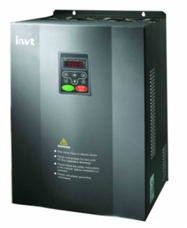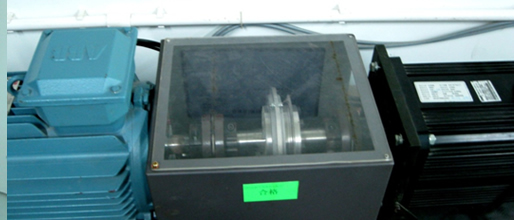The Chinese company, INVT, has utilized HBM’s T10F torque transducer and MP60 amplifiers to measure torque and speed of an electric motor controlled by a variable frequency drive (VFD) in order to optimize performance.VFDs, or inverters are widely used in industry to restrict an alternating current (AC) motor’s rotation by controlling the frequency of the electrical power supplied to the motor. By deploying optimized VFDs, industrial users can save energy, extend equipment life, reduce maintenance and tighten process control.
Torque transducer ensures optimization of INVT control algorithm

Better data on vector control technology

As part of its on-going research program, INVT – which manufactures low, medium and high voltage inverters, servo drives and brake units – needed better data on its vector control technology. This is one of the four main control methods for VFDs; the others are Volts/Hertz, Slip frequency and Direct Torque control.
INVT worked in co-operation with HBM to build a dynamic mathematical model that could then be used to optimize the control algorithm of VFD to improve its performance. The optimized algorithm ramps up the motor gradually and smoothly, yet can be programmed to run the motor at a precise speed, stop at a precise position, or apply a specific amount of torque.
Complete integrated testing solution
HBM was able to provide a completely integrated solution for implementing the dynamic test that comprised transducer, measurement electronics, software and service.
The precision of the T10F torque flange played an important role and this is mounted with couplings to compensate for misalignment between the drive motor and the load motor while measuring torque and rotating speed. The extremely short design of the T10F took up less space in the test stand than other models thus reducing vibration and saving money while the very high torsional stiffness and low moment of inertia minimized any sympathetic vibrations in the system.
Maintenance-free torque measurement system
In addition the torque measurement system remained maintenance-free because there are no bearings or slip rings. All torque and speed signals from the sensors are conditioned the HBM’s MP60 amplifiers and communicated with the computer via USB to a CANbus interface converter without any accuracy loss.
INVT also benefitted from HBM China’s design consultancy, site erection advice, commissioning and customer training.
By working in co-operation with HBM in this way, INVT aims to maintain its leadership in electric drive and industrial control technology while increasing its proficiency in mature vector control technology and special inverter control technology.
INVT next aims to seek breakthroughs in four-quadrant control technology utilizing similar technology for optimizing performance